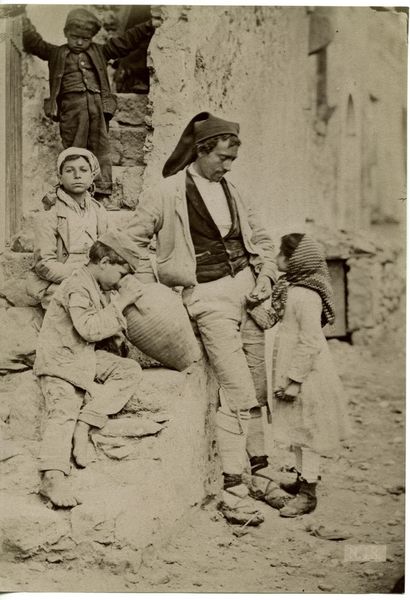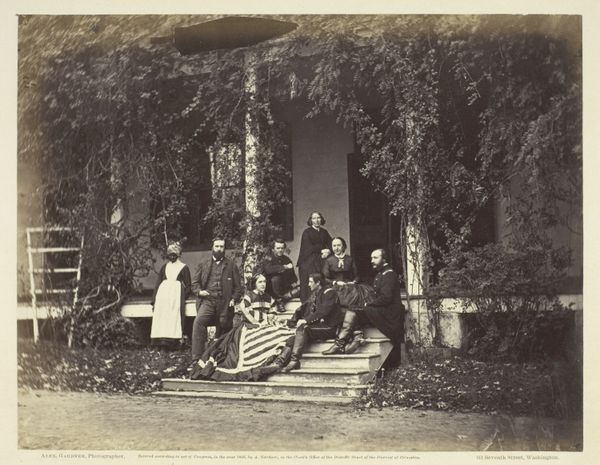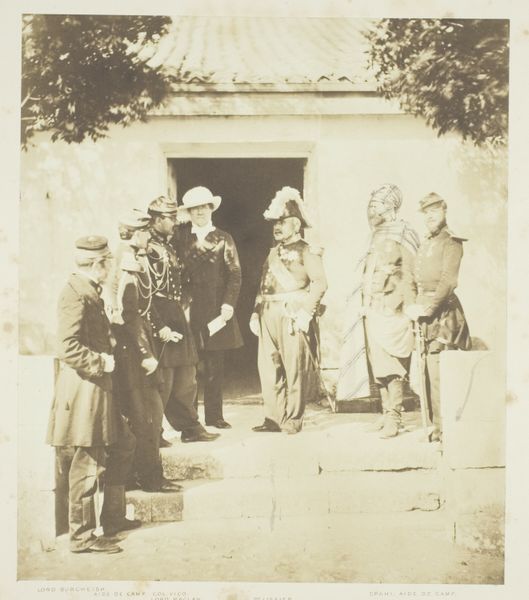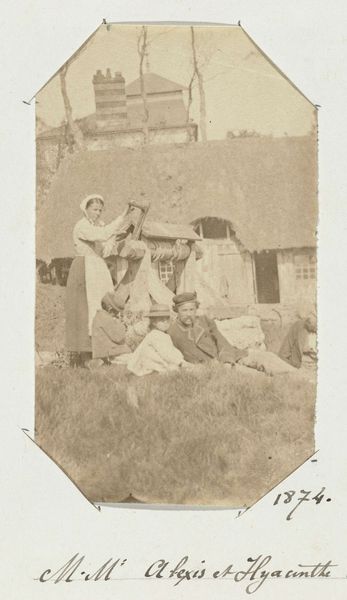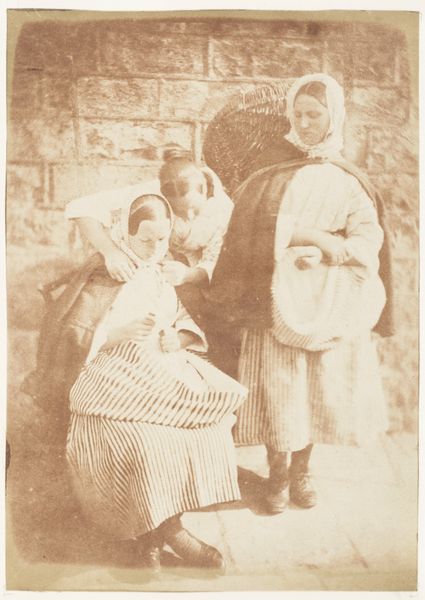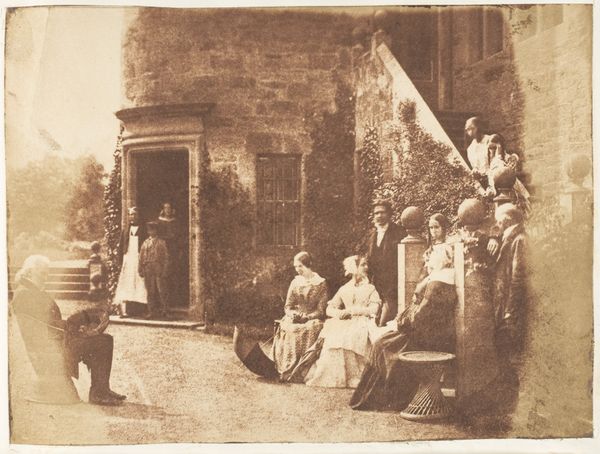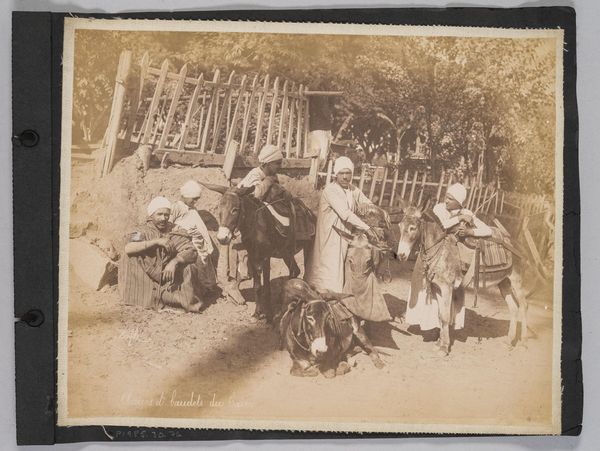
Groepsportret van de mannen van het reisgezelschap met de kawasch (gids) in Libanon 1898
0:00
0:00
photography, albumen-print
#
landscape
#
photography
#
group-portraits
#
orientalism
#
albumen-print
Dimensions: height 104 mm, width 73 mm
Copyright: Rijks Museum: Open Domain
Editor: Here we have an albumen print from 1898, titled "Groepsportret van de mannen van het reisgezelschap met de kawasch (gids) in Libanon," which translates to "Group portrait of the men of the traveling party with the kawasch (guide) in Lebanon," made by Johannes Lodewijk Heldring. It feels so staged, yet the attire of the men contrasts so sharply. What do you see in this photograph? Curator: Well, instantly I’m drawn to the fascinating clash of cultures presented so starkly. We see European travelers posing alongside a local guide, the kawasch, amidst what appears to be a rather humble Lebanese setting. I imagine they were keen to capture themselves amidst this ‘exotic’ landscape. I get a slight feeling of, hmmm, a somewhat awkward staging – doesn’t it seem they’re trying perhaps too hard to “capture” the Orient? Editor: I can see that! The composition does feel a bit forced. Do you think it has anything to say about colonialism? Curator: Absolutely! Images like this, while seemingly innocent, often reinforce colonial power dynamics. The travelers are centered, brightly lit, clearly in charge, while the landscape and local guide almost serve as a backdrop – like props in their travel story. Photography back then wasn’t just documentation; it was an assertion of a certain viewpoint. Editor: It's strange to think about photographs, especially back then, carrying that much… weight. Curator: Indeed, what might feel like just an old photo actually tells us volumes about historical attitudes and perceptions. Images, and really all art, have the capacity to unveil the unseen. Look closely—what feeling do you get looking into the eyes of that "guide"? Does it feel like pride, servitude, annoyance perhaps? Editor: You know, I hadn't considered that until now. It’s certainly a complex piece, revealing layers of history within a single frame. Curator: And that's the magic of art, isn’t it? It can spark endless conversations and interpretations.
Comments
No comments
Be the first to comment and join the conversation on the ultimate creative platform.




